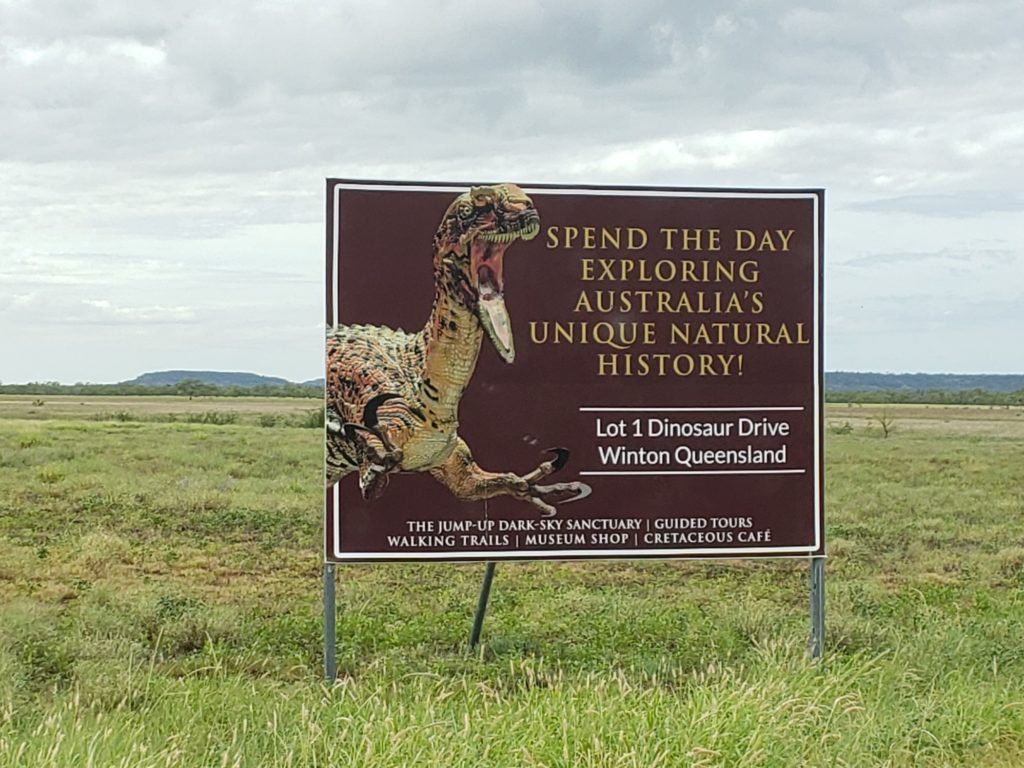
Lark: (n) – 1. Something done for fun; an amusing escapade. 2. An activity regarded as foolish or a waste of time.
One of the draws for coming out to Longreach was the suggestion that we could visit the dinosaur museum in Winton. It would be a further two hours away, but, well…dinosaurs!! We had passed various signs along the road advertising the museum and each had built just a little bit more excitement. But before we begin our incredible journey into the past, please notice some of the amazing things we can look forward to seeing once we arrive.
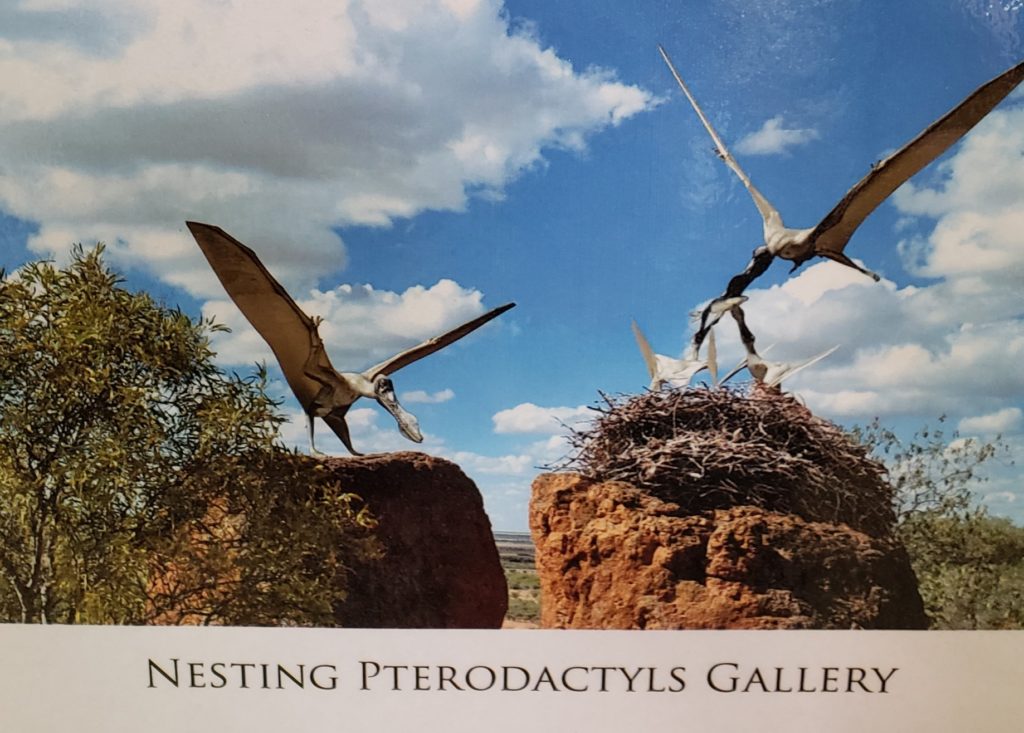
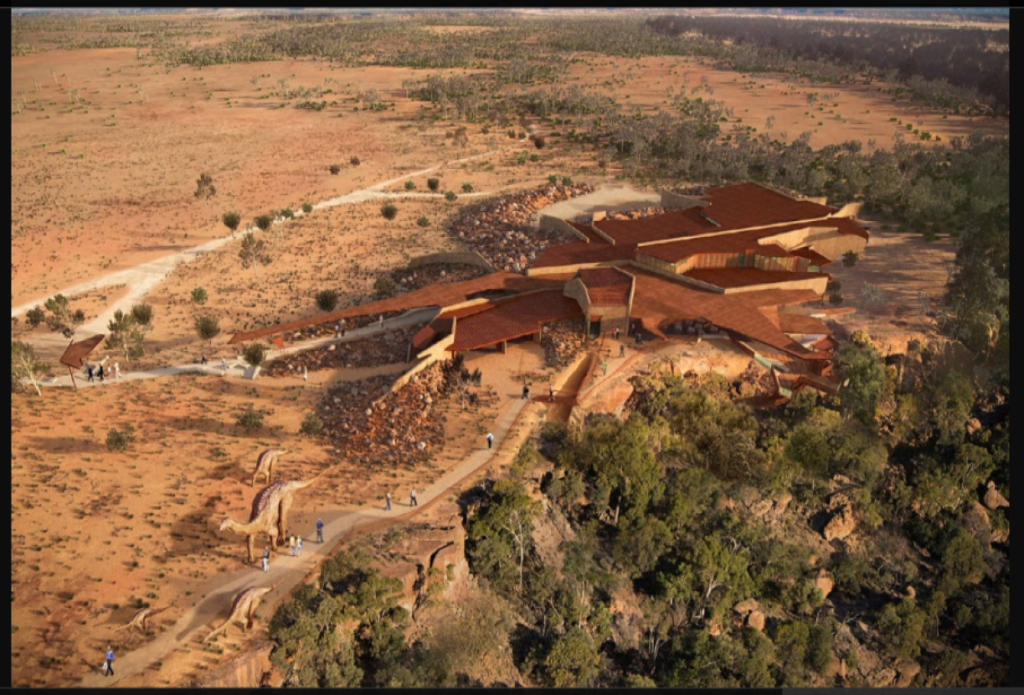
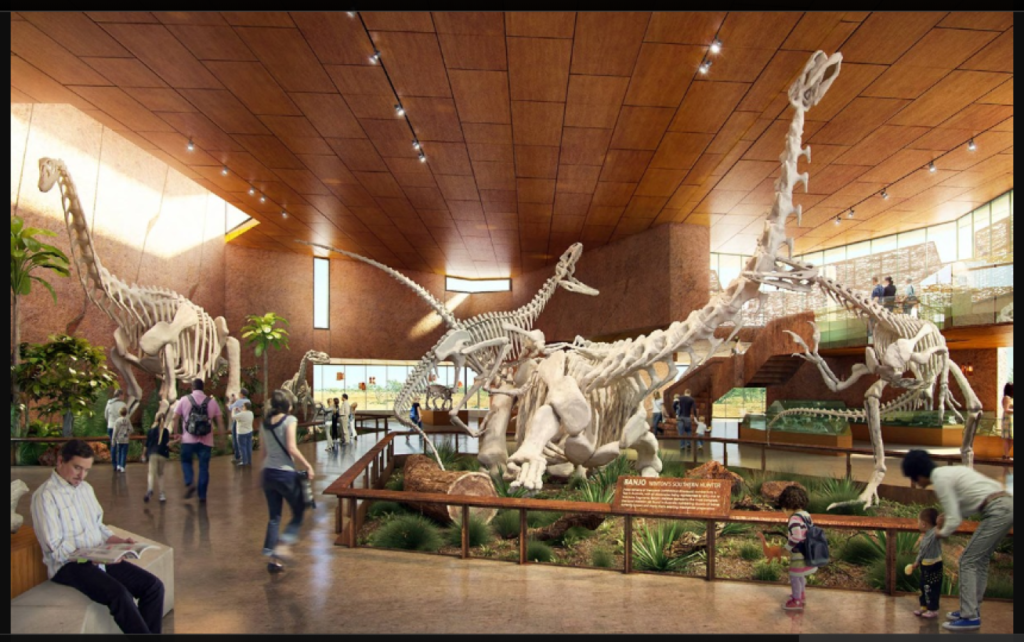
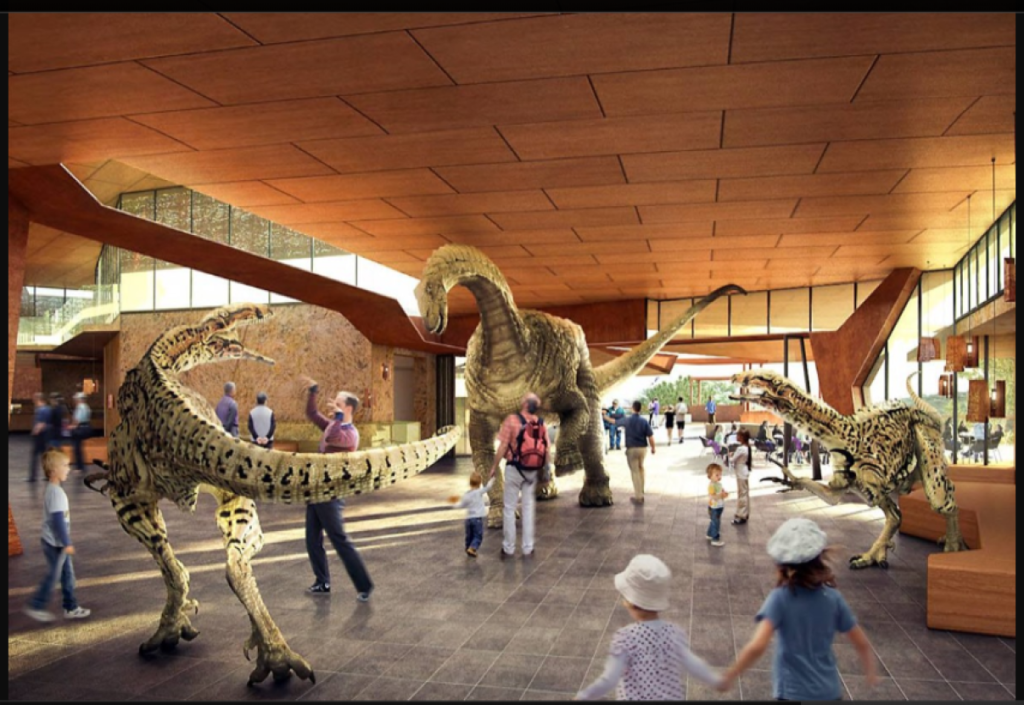
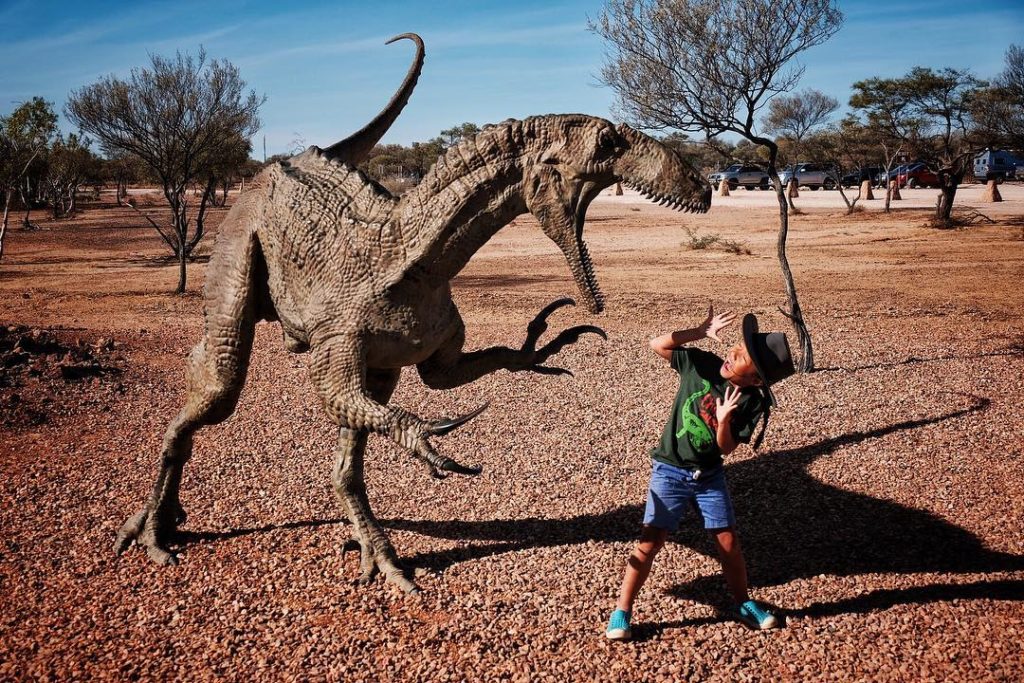
Winton itself was a long way from nowhere, with the closest town, Opalton, being over an hour away and being populated by fewer than 600 people. Two hours East was the town of Muttaburra, which immediately caught my attention because I recognized it as the place the “muttaburrasaurus” must’ve gotten its name. This animal was introduced to me during many, many fevered hours playing Jurassic World: Evolution, a game which involved building and running a dinosaur park across the now legendary “Cinco Muertes” islands. Part of the game involved sending expeditions to various sites around the world to dig for fossils and build the genomes from which to produce the animals needed to inhabit your park. The Muttaburrasaurus had been the only dino available in Australia, but quickly became one of my favorites. It turns out that there were actually several dinosaurs that had been discovered down under, but more on that later. The point is that my childhood love of dinosaurs has not faded, and my excitement was running high.
The Australian Age of Dinosaurs Museum was located atop a mesa known as the “jump up”. This formation is comprised of rock that has resisted the millions of years of erosion that had worn down and lowered the surrounding area. The jump up covers over 4,000 acres of land and is among some of the most fossil-rich land in Australia and will likely continue to yield new specimens for many years to come. In fact there is already an abundance of unearthed bones in plaster cocoons waiting patiently on warehouse shelves to be cleaned. The facility we were now going to visit boasted the museum itself as well as a fossil preparation lab, reception center, and “Dinosaur Canyon” walkway which was lined with life-sized, stone dinosaurs. Beyond all of this were opportunities to actually participate in a dig at a nearby site or to help clean the finds in the on-site laboratory, for a substantial extra fee.
I couldn’t wait.
We drove to the top of the mesa and paid the $55 admission fee for three hours and the Ultimate Dinosaur Pass package. The reception center appeared to be made of stone and looked to have grown up out of the surroundings organically. Before entering, we were greeted by our first dinosaur, who was lovingly known as “Banjo”, and was named after Australia’s beloved poet Banjo Patterson, the man who penned Waltzing Matilda. Officially designated Australovenator Wintonensis, this theropod was discovered in 2006 and bears a similarity to a velociraptor.
The reception center itself was quite small with the gift shop and Cretaceous Café crammed into it. While the the same pvc dinosaur toys featured in the Jurassic World movie were offered at the gift shop, which made me happy, I was pretty disappointed not to find any postcards with both a dinosaur and the museum logo on them simultaneously. The café had good food and there was an area with shaded chairs and tables overlooking a breathtaking vista of the valley plain below, but it also featured squadrons of crazed flies intent on sharing your meal or joining it inside your mouth. I bought a fly net and gave up trying to look like a true, manly Aussie bloke. Peter wore none and seemed completely nonplussed by them once again.
A tram pulled up and Peter and I climbed aboard to go to “Dinosaur Canyon” and walk among giants, while Carolyn stayed behind to take it easy. (Sadly it wasn’t a good trip for her as she ended up feeling a bit unwell for a lot of it.) A nice, young girl named Sarah was our guide. She knew a lot about dinosaurs and had moved to Winton specifically to work at the museum. We drove to a small building with bathrooms and disembarked. From here there was a zigzagging, inclined concrete walkway leading down and featuring various, impressive-looking stone recreations in very vital, very realistic poses. Whereas most museums of this sort would typically have such displays set up indoors, it was a nice departure to be able to wander among replicas of these creates out in the natural environment. I had only seen this in one other place.
In 1852, The Crystal Palace was moved to the borough of Bromley in London. To accompany the building, a sculptor was commissioned to create life sized dinosaurs representing 14 different species that, at the time, were terrifyingly realistic and on the cutting edge of Victorian scientific discovery. It really was the “Jurassic Park” of its day. Of course by today’s standards these creatures look a bit silly and are woefully inaccurate, but they can still be seen in their original location lounging around, and in, a small pond at the Southern end of the Crystal Palace Park. In fact they are now protected as among the historically important sites and buildings of England, because although they are terribly out of date, they really do help to show how far paleontology has come. These massive creations would have been incredible to see back then, and even now wandering through a park and seeing life-sized dinosaurs is still amazing. Many are the times I would run at Hudson Springs Park and imagined how awesome it would be to have life-like dinosaurs naturally posed among the trees along the trail circling the lake.
Back in Winton, all of the breeds represented in Dinosaur Canyon were ones that had been discovered locally, though the statues themselves were produced by an American company and reassembled here. Unfortunately the walk was somewhat short, and after a photo op and a chat with Sarah, we were back on the tram returning to the reception building. I was tempted to ask the inevitable question:
“Now you do eventually plan to have dinosaurs on your dinosaur tour, right?”
-Dr. Ian Malcolm, Jurassic Park
And, well, that was when things began to actually sink in for me.
For a place called the “Australian Age of Dinosaurs” museum, one might be forgiven for thinking that there was, indeed a museum to visit. Nope. That was all future tense. The enormous life-sized sauropods, the battling skeletons, the impressively large nesting pterosaurs, and the herds of other stone dinosaurs pictured on the tour did not, as yet, exist. There wasn’t even a scale model of the future structure to look at so that one could imagine what it would be like to be inside it when completed. It was at this point that I turned to the camera and for an instant my head was replaced by that of a cartoon donkey accompanied by wah wah horns.
The next portion of the tour involved sitting in a small theater and watching an advertisement for a video that could be bought in the gift shop and then being told about an array of fossils that were laid out on the floor and on tables under the screen. All of them had been unearthed here and all were incomplete; a hip bone belonging to this dino, a femur belonging to that one. Much like the museum itself, these creatures would one day be quite impressive when fully assembled, but for now were just single bones that only hinted at future greatness.
Next came the much-anticipated fossil preparation lab. I imagined maneuvering around white lab coat clad scientists in a high tech and clinically clean facility; perhaps donning some VR-assisted goggles to examine finds while delighting in interactive displays to learn about gene sequencing breakthroughs. Nope. It was a small warehouse with a lot of interested flies, one of whom actually managed to fly down my throat as I attempted to speed walk while finishing a Coke. We stood between two large racks containing marked, plaster specimens and watched a video. On the other side of the racks we watched various people who had signed up for one of the $124-$724 “Prep-a-Dino” packages and were now leaned over large slabs of stony bones cleaning them with what appeared to be dental drills. We did see an illustration of the region’s indigenous prehistoric finds, however, which drove home how much there is still to discover from the prehistoric past here. The total number of dinosaurs discovered in the country ranges from six to nine depending on who you ask. In Winton four unique species have been identified so far, but there are many more footprints of creatures whose bones haven’t yet been unearthed.
I would look forward to one day seeing the completed museum, but honestly what are the odds I’ll ever be in Winton again, or Australia for that matter? Our visit to the “Museum” was one of those things where you just had to laugh and enjoy the experience for what it was. There were some neat things to see and the landscape was amazing, but more than anything the cost of our admission helped to fund the foundation and make the eventual museum possible. And above all, it was another nice outing with the Condoleons.
The trip up “Dinosaur Way” to the mesa had helped to build anticipation, but now the trip down offered beautiful scenery and gave a real sense of just how big and empty this place actually is.
But that was just the first half of the day. Next we’ll swing into Winton itself before heading back to Longreach and catching a meeting.
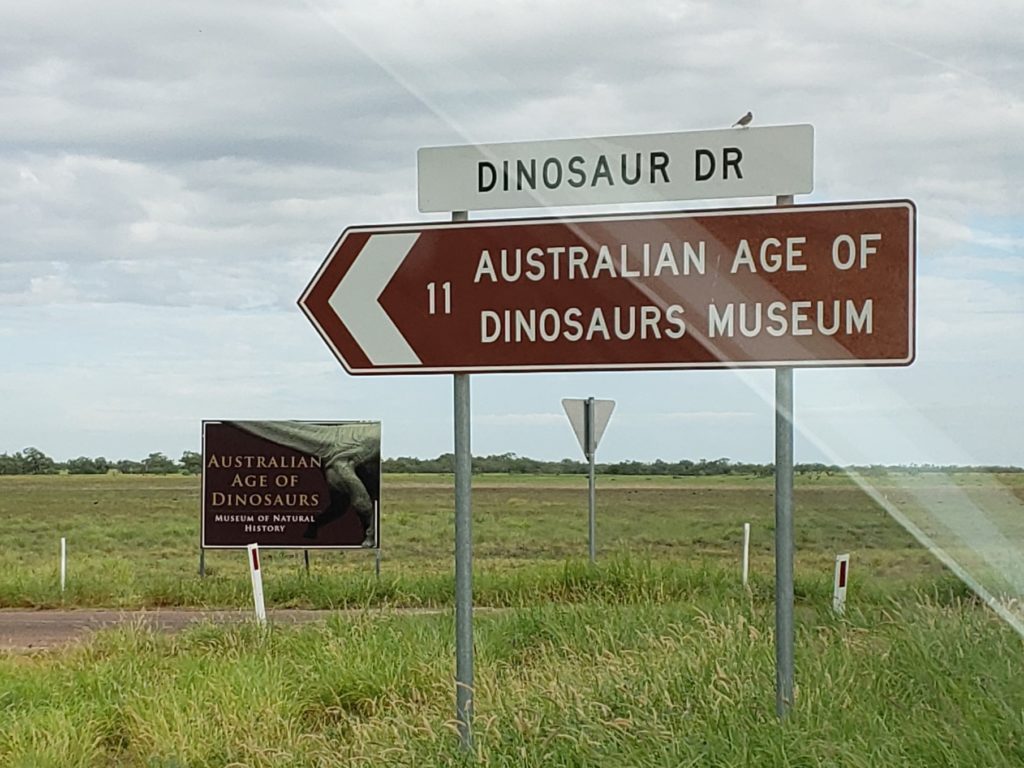
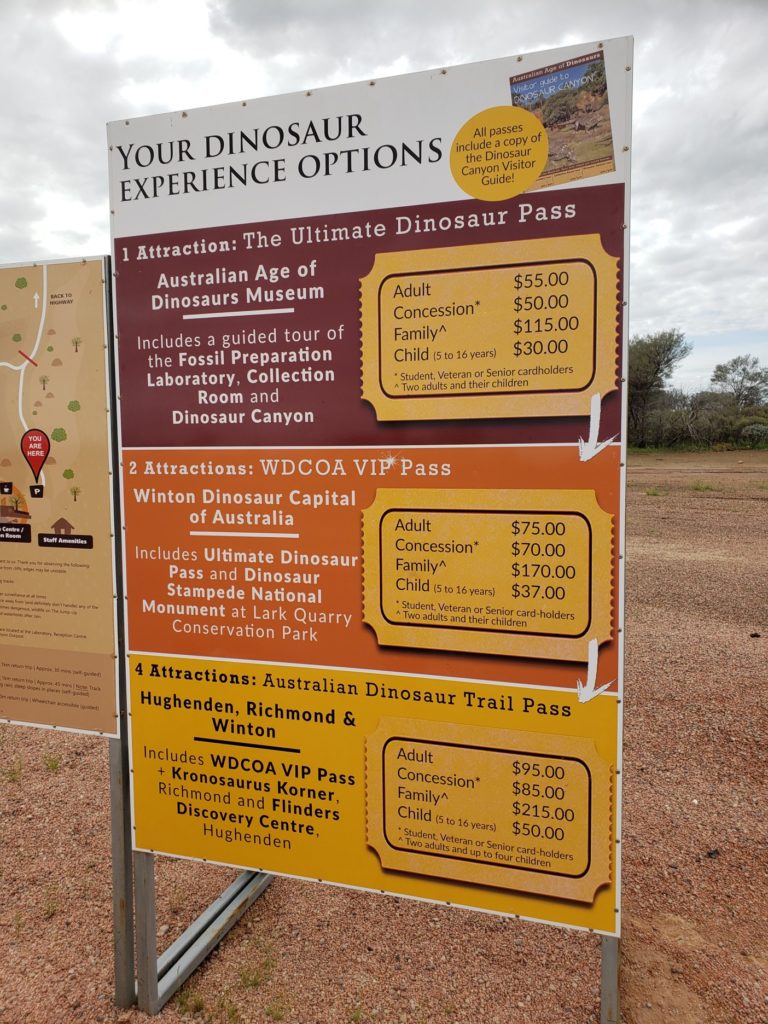

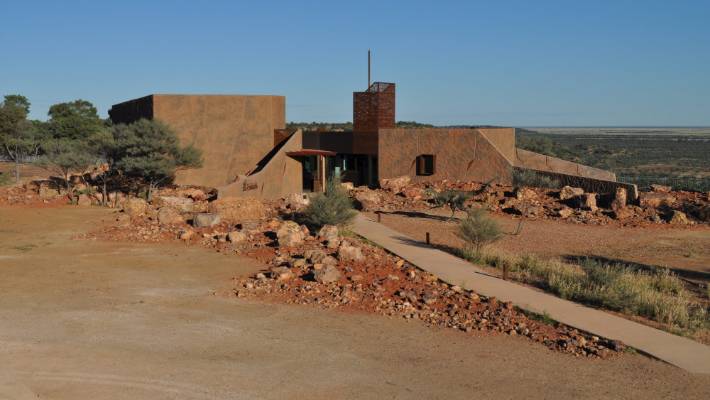
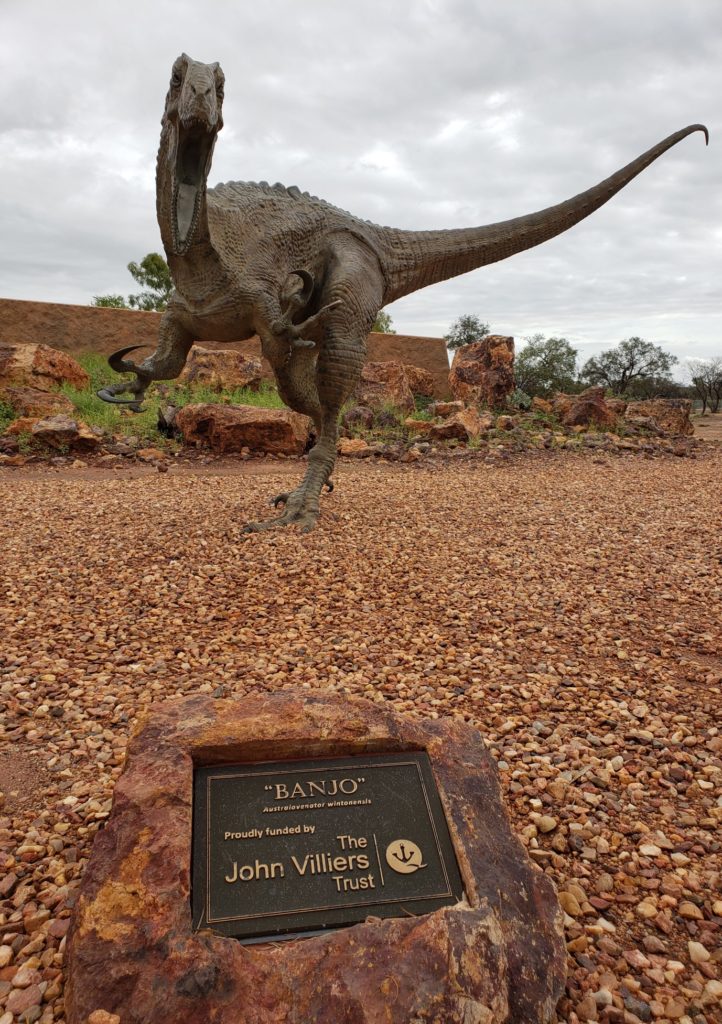
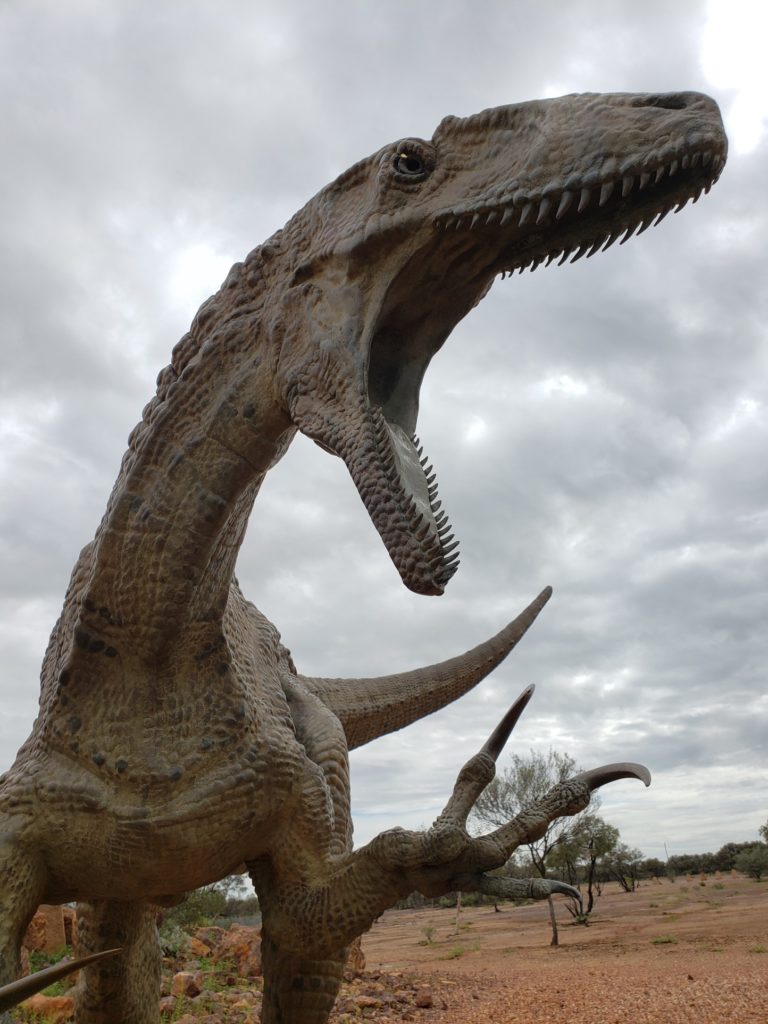
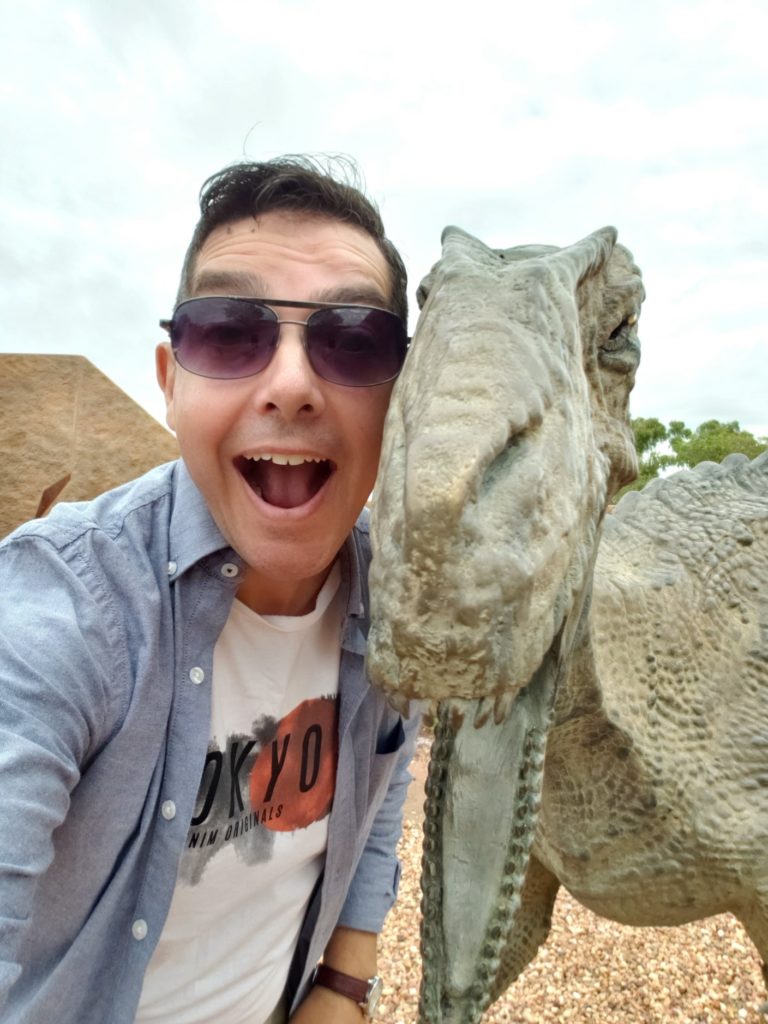

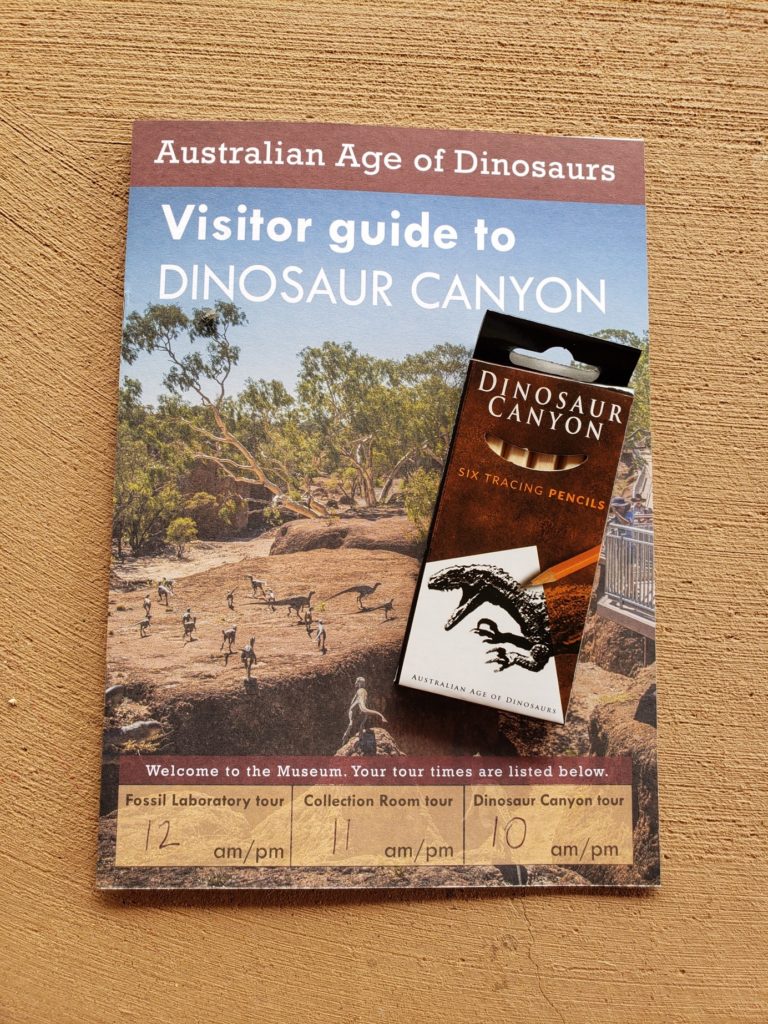
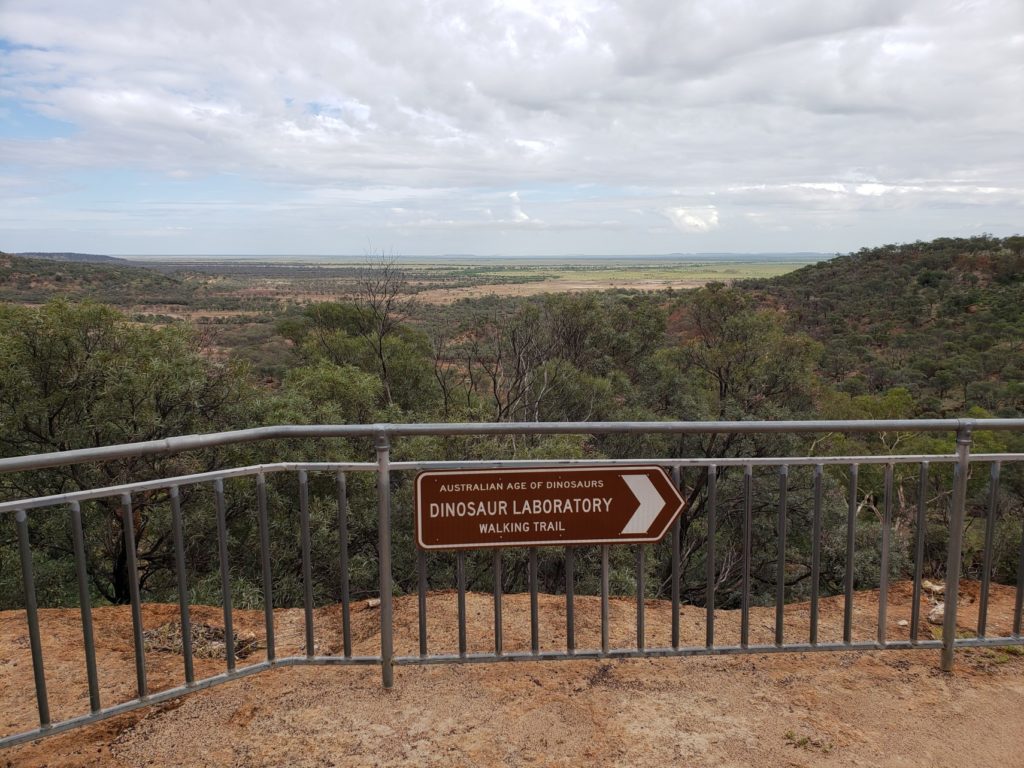
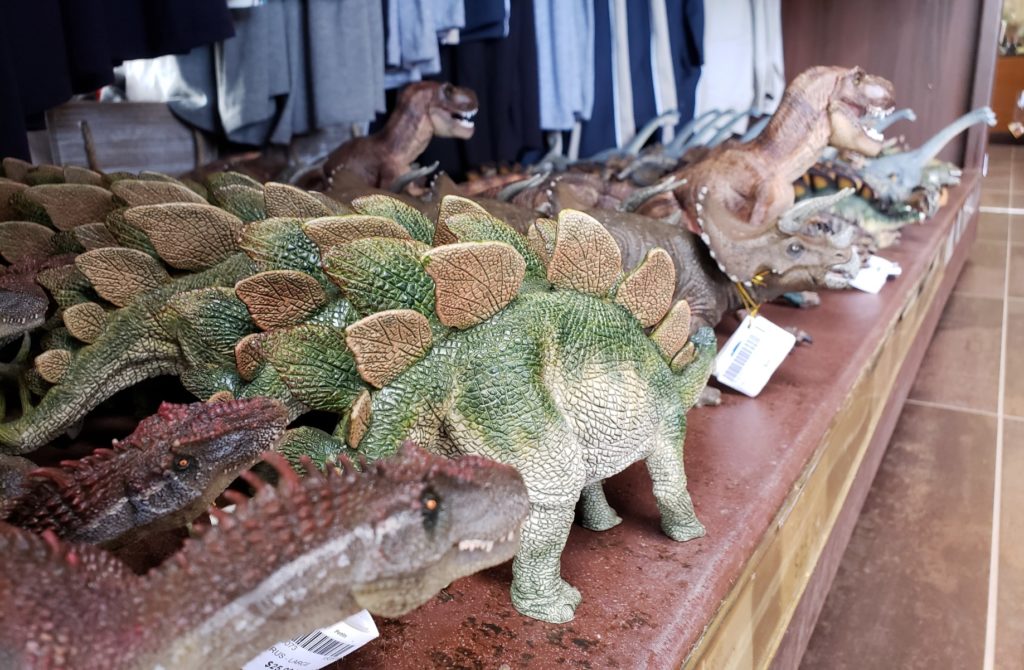
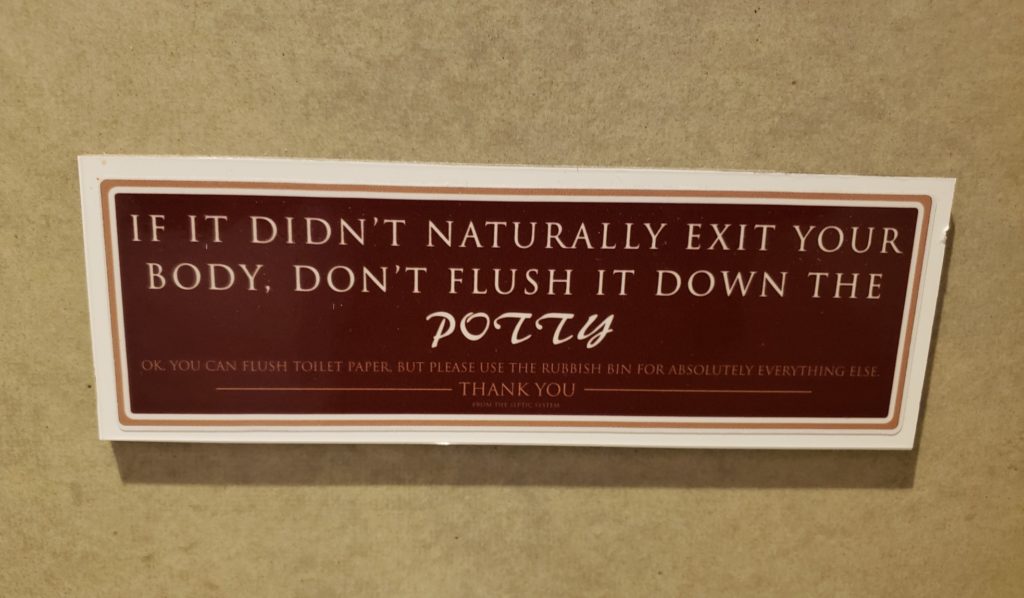
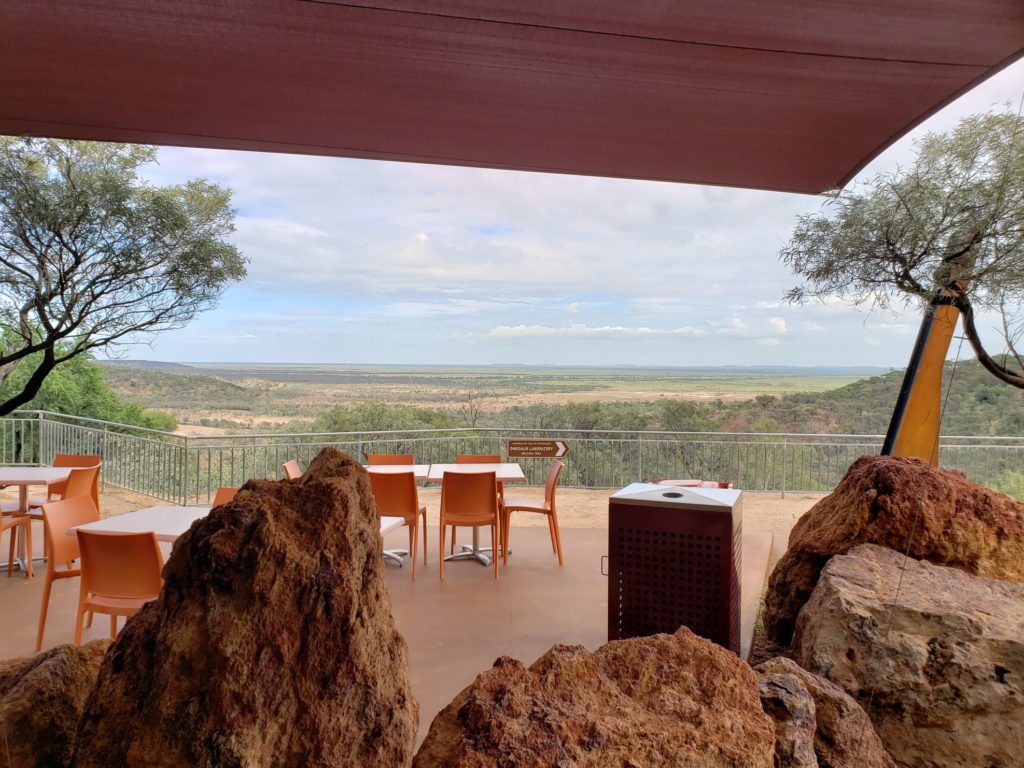
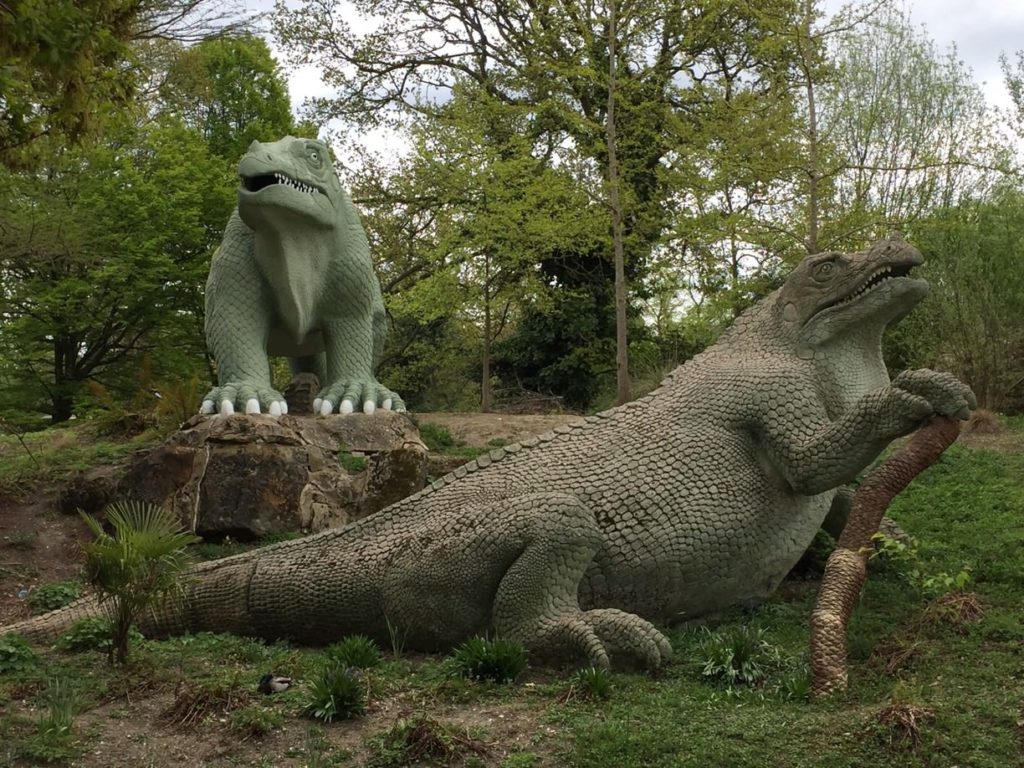
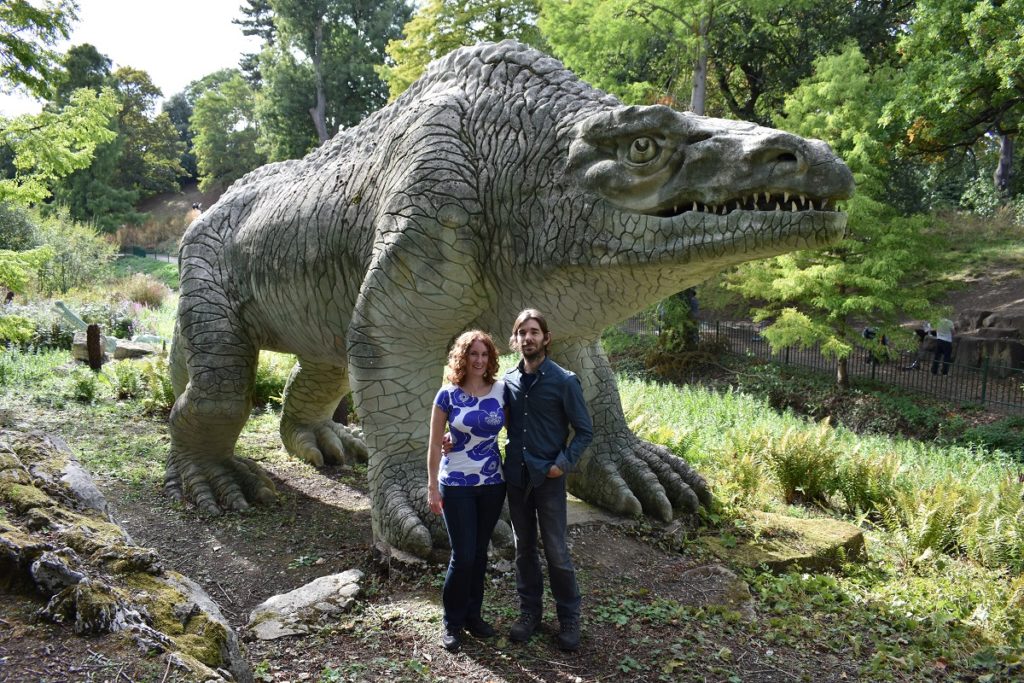
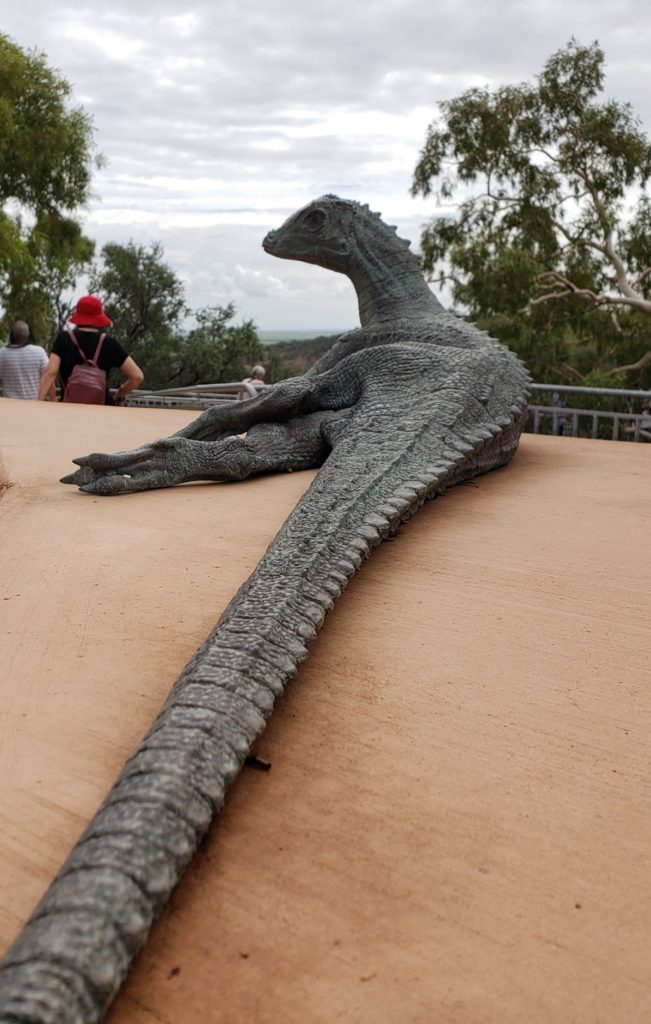
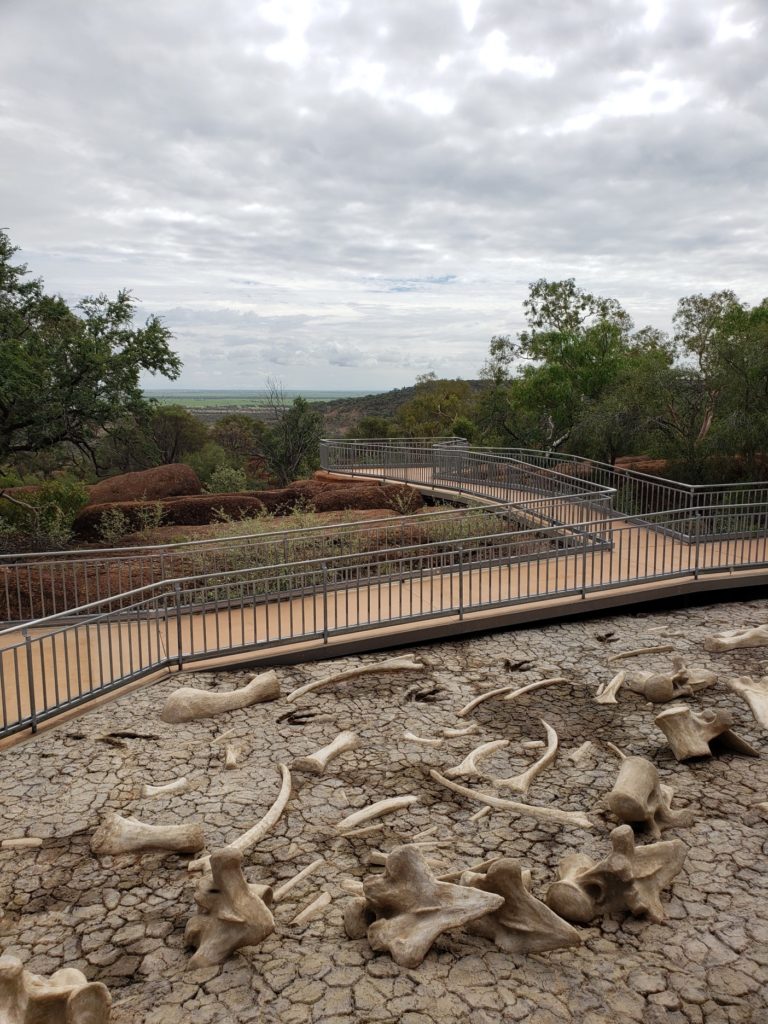
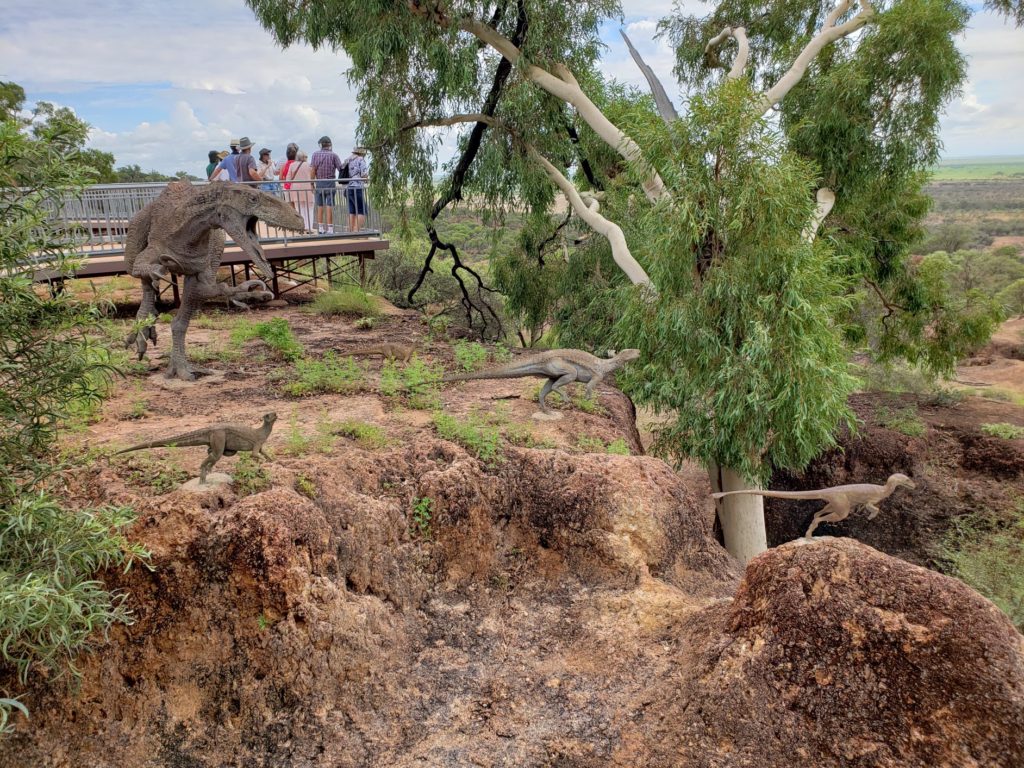
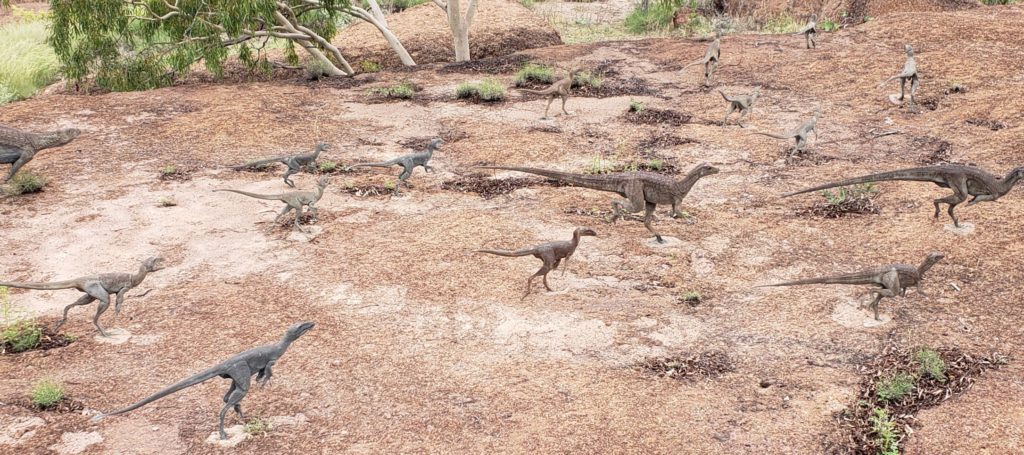
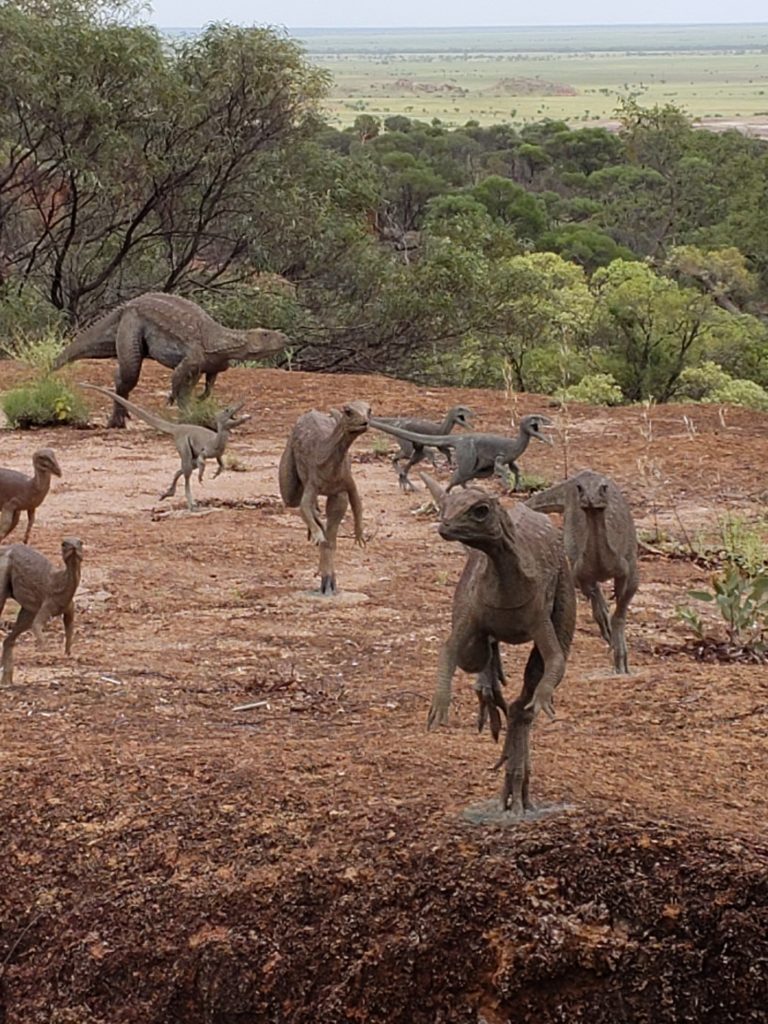
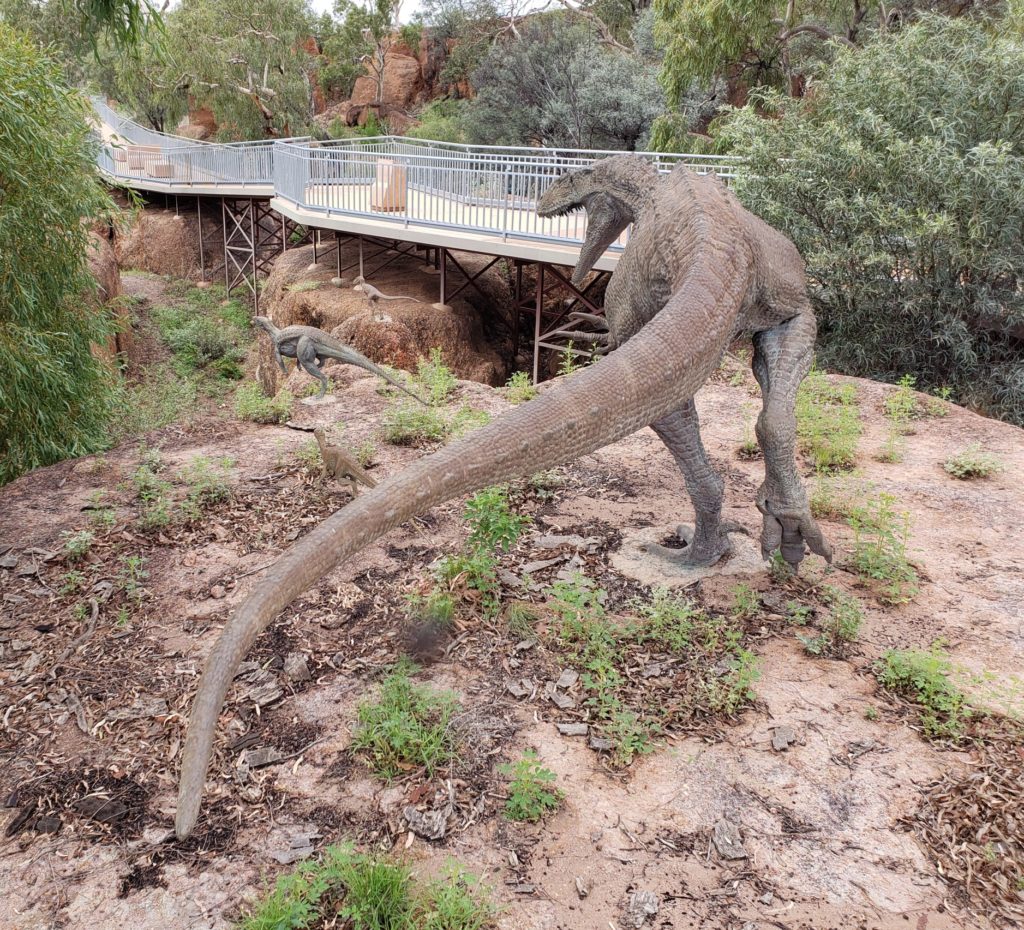
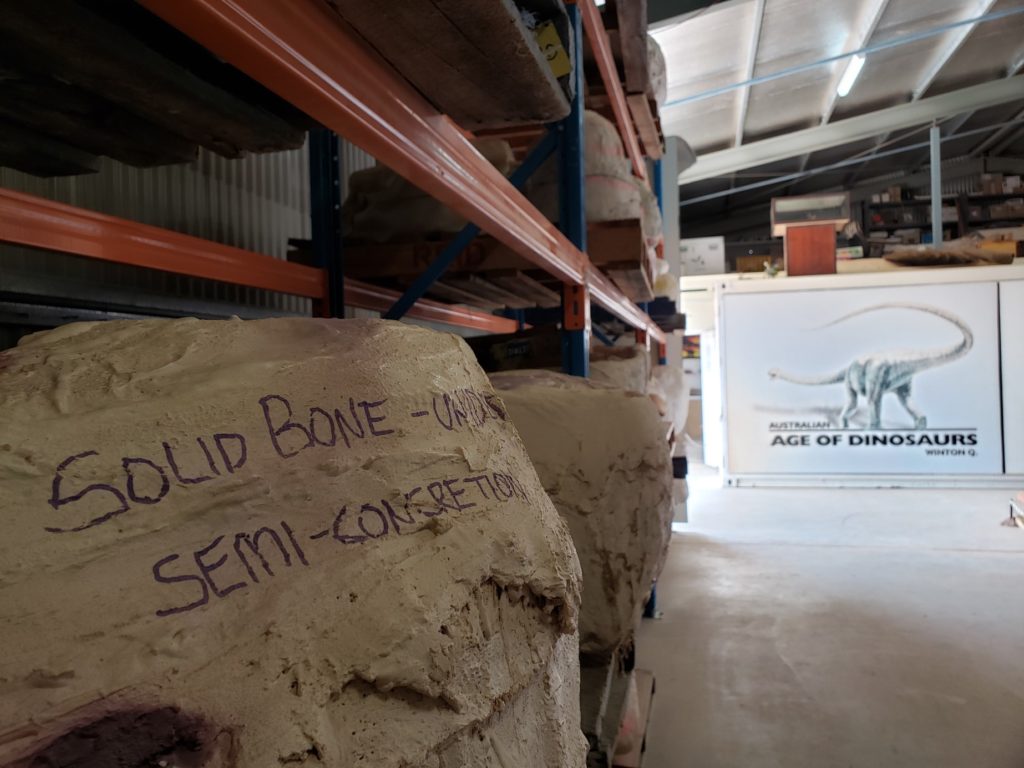
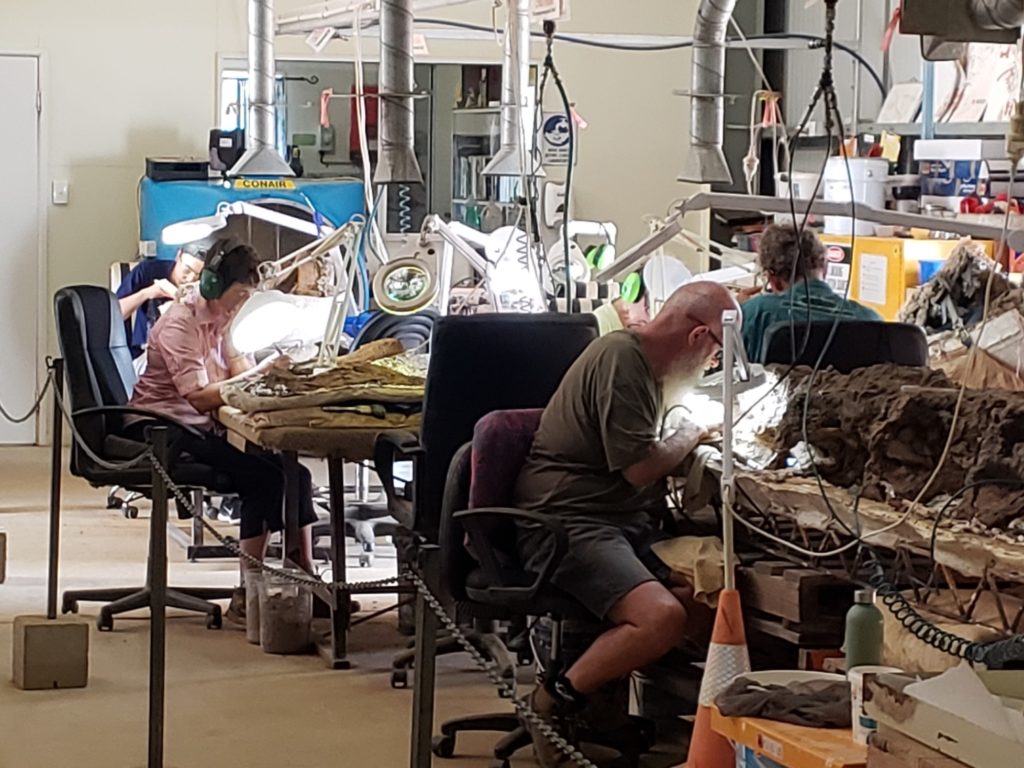

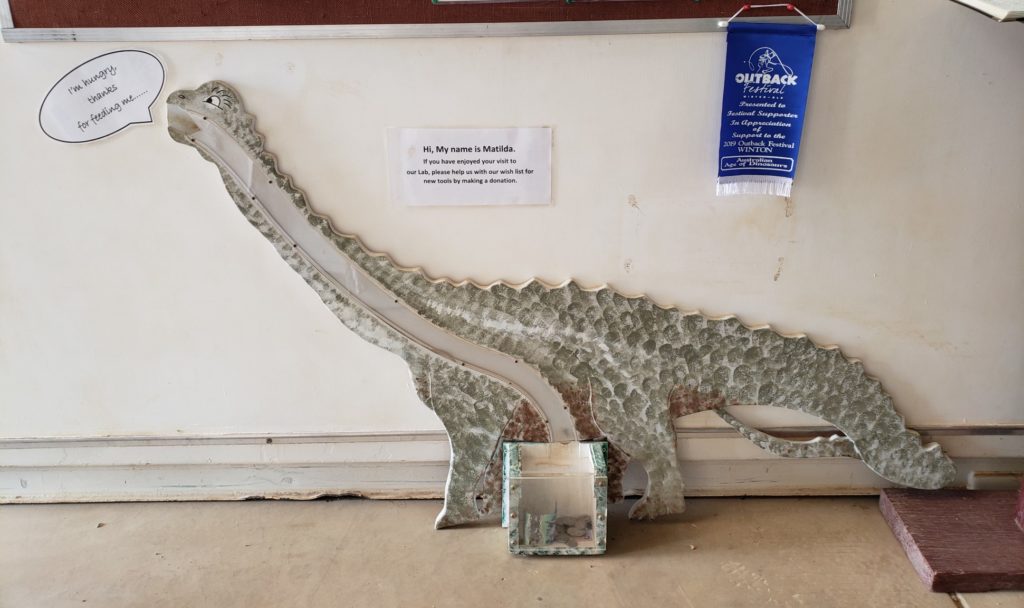

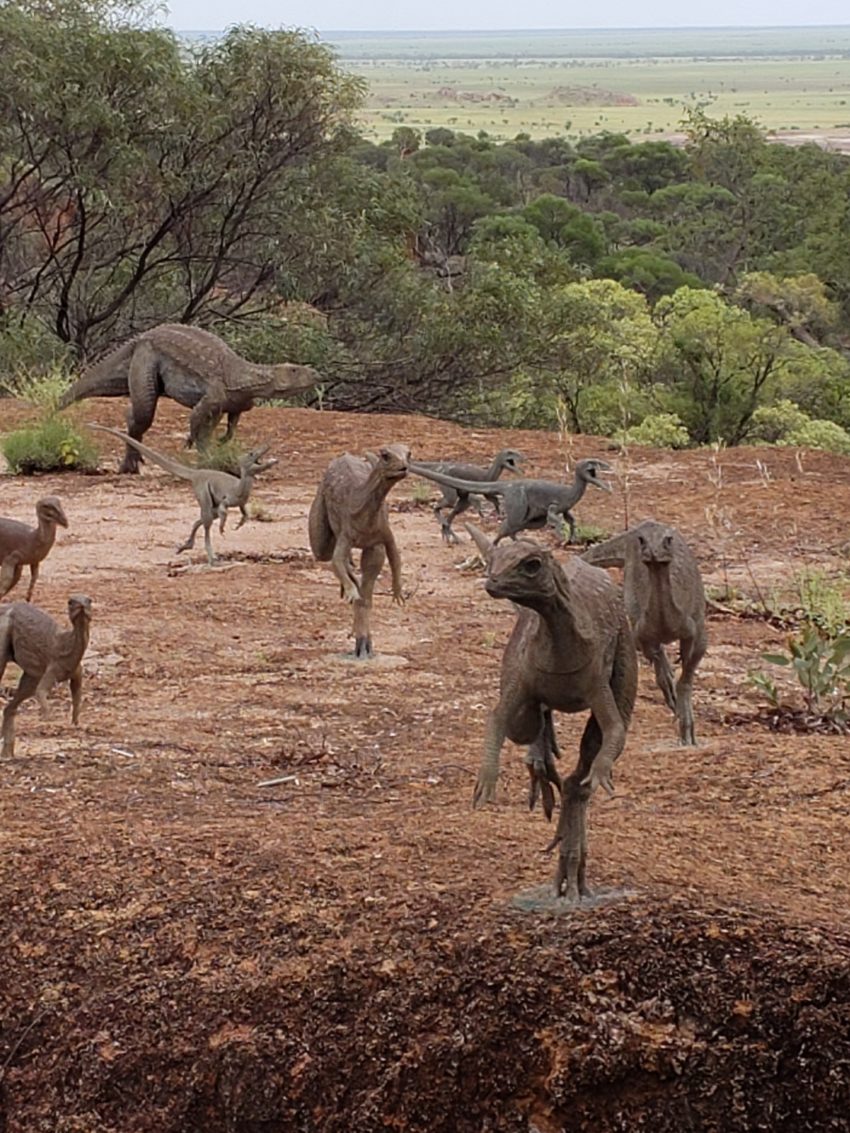
Well that was a lot of money for kind of a bust! Poor Carolyn! I don’t know how she did it! that was a long day for her waiting around for you guys. Man those flies would drive me crazy!!